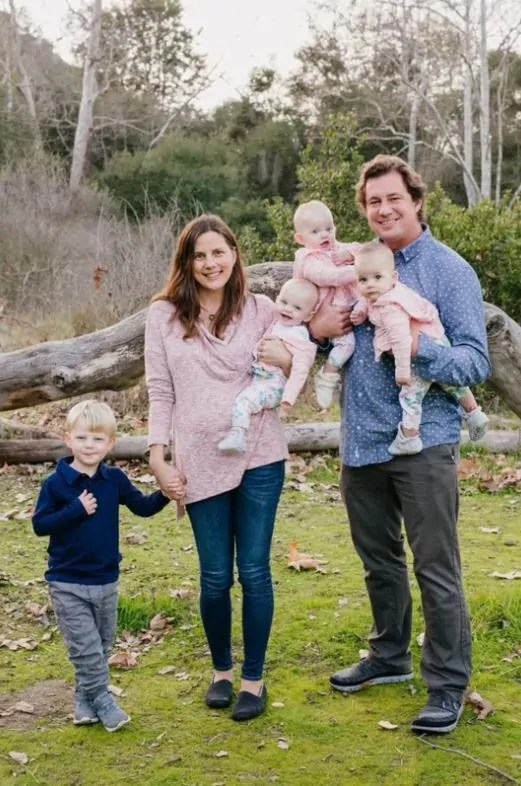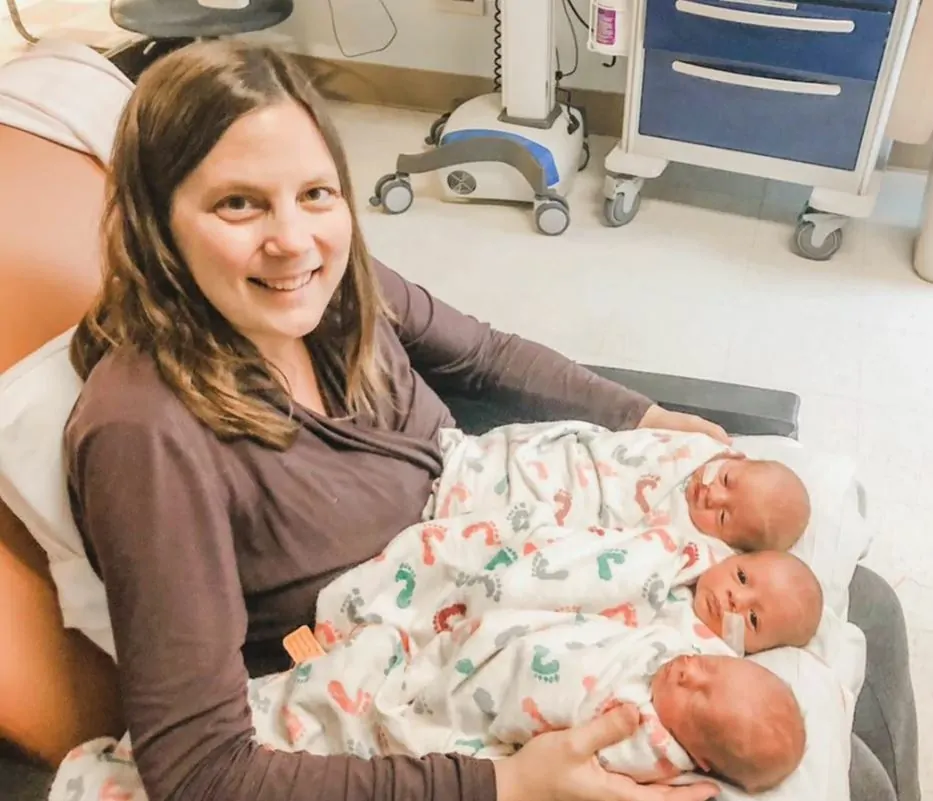When Genevieve “Genna” Knox became pregnant at age 39, she was taken aback. The surprises, however, didn’t stop there. The result of her singleton pregnancy was triplets.
The first twist occurred during her ultrasound at 20 weeks of pregnancy when the ultrasound technician suddenly went silent.
“She says, ‘Wait, you’re having twins?’” Knox said, “I replied, ‘No, I’m not.’ I turned around and saw two babies as plain as day when I looked up.”

In her first trimester, Knox, a fifth-grade teacher in San Diego, California, said that she chose not to have an NT scan. Knox had received thorough prenatal tests because of her advanced maternal age.
“All the blood work came back normal, so my doctor asked if I wanted to wave the nuchal, and I said, ‘Oh, sure.’” It was just one less appointment, and I was working full-time,” Knox explains. “Whoops.”

Knox claims that when she and her husband Kyle discovered they were expecting triplets, they felt like the “luckiest people in the world.”
“I started having kids later in life, and I didn’t know if I’d even be able to have one,” the woman claims. “We were ecstatic.”
“I recall saying, ‘I can’t even fit 3 car seats in my car,’ I recalled telling Kyle.”
She had no idea that a van would be necessary.
The Knoxes made the decision to have a non-medical four-dimensional ultrasound taken nine weeks later as a keepsake. They merely wanted some detailed photos to present their relatives; it wasn’t for diagnostic purposes.
Knox recalls how the sonographer kept moving the wand across her belly. She began to feel worried because it continued for such a long time.
“At last he asks, ‘How far along were you when you found out you were having twins?’ And I told him what happened during the 20-week scan, saying, “Oh, gosh, you’re not going to believe it,” Knox recalls.
“I hardly recall anything else that happened at that time. I was completely shocked,” she claims.

On March 21, 2019, Knox gave birth to three daughters: Kaylee, Lily, and Cecilia. The sisters were in the newborn intensive care unit (NICU) for a few weeks, but they are now thriving in preschool.
In La Jolla, California’s Scripps Clinic, where he oversees maternal-fetal medicine, Dr. Sean Daneshmand tells TODAY that concealed triplet syndrome is “not as uncommon as you would think.”
Knox’s doctor, Daneshmand, explains that one infant can hide behind the other when they are both extremely little. “Usually, the baby that’s been missed will appear all of a sudden by weeks 26, 27, and 28.”
Dr. Ashley Roman, director of Maternal-Fetal Medicine at NYU Langone Health, says that between 8 and 10 weeks is the best time to determine how many fetuses a woman carries. Recall that Knox declined to have an NT scan during her first trimester.
According to Roman, the size of the baby has an impact on how much the ultrasound probe can observe as it grows. Therefore, even if we can see individual organs, after around 15, or 16 weeks, it becomes difficult to observe the entire baby in one shot. In the end, it gets a little simpler with time to miss a second or third fetus.
She continued, “But it’s still unique. Especially now that ultrasound technology is at its best.”
The “hidden triplet,” Cecilia, is the most difficult, according to Knox.
Knox says, “She has a very huge personality. She is amusing and we adore her to the moon, but she unquestionably follows her own path.”
More than one million people watched Knox’s story on TikTok after she posted it there. Knox is now 43.
“OMG, you found out at seven months?” One individual wrote, “I’m only three months pregnant and I’m freaking out right now.”








